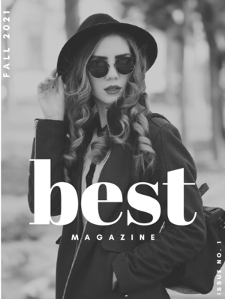
A virtual what? asked the perplexed high-school principal on the other end of the line. I was halfway through my one-minute pitch of the BEST Virtual Newsroom, a new cross-cultural media-literacy program for German and American teens. Apparently in a hurry, he huffed and quickly passed me on to a teacher of English at the Hamburg school. To my relief, she was more enthusiastic about the opportunity. She promised to distribute the call for applications.
I made that first cold-call in spring 2021. The Amerikazentrum Hamburg, a binational cultural institute, had approached me a few weeks earlier with the germ of an idea. Why not develop a virtual program to teach teens in Hamburg and its U.S. sister city Chicago the basics of journalism? A firm believer that media literacy is needed now more than ever, I loved the idea. I threw myself into the planning right away.
And there was a heck of a lot to plan, indeed. We needed to build from scratch a solid concept, application forms, a selection committee, a syllabus, a roster of guest speakers, a functioning virtual platform, a course timeline and more. By August, the concept for the tuition-free digital seminar was ready. Out of several dozen applicants, 18 had been notified of their acceptance. The first of four Zoom sessions took place on a Saturday that month. For German participants, it was late afternoon at the start of a new academic year … for Americans, it was early morning at the height of summer vacation. The different schedules and time zones were tricky, but the program’s feats far outweighed its challenges.
In four digital sessions within seven weeks, students learned reporting basics from journalism instructors and practitioners in Germany and the U.S. They learned how to spot a newsworthy story; how to interview anyone, anywhere; how to write compelling articles; and how to pitch a story to editors. In addition, they learned to simplify their writing styles, fact-check their own work and the work of others, and publish across various media channels. Professional editors gave them valuable, line-by-line feedback on their reporting and writing while guest speakers added a broader perspective to the role of the media in society. With just three hours per session and a lot of ground to cover, we all felt a bit rushed at times. But we still managed some lively discussions. To name just three, we discussed the Texas abortion ban, different approaches to gender pronouns in Germany and the U.S., and speed debating, a topic many German participants had never even heard of.
Between sessions, students worked in intercultural groups of three. Each one was assigned a pre-determined story lead based on ideas submitted as part of the application process. By the program’s end, these stories were ready to be pitched to the media. Stories ranged from debates about home schooling sparked by the Covid-19 pandemic to environmental drawbacks of meat substitutes.
We surveyed students at the program’s end. Their enthusiasm was broad. Some participants caught the ‘journalism bug’ and are mulling careers in journalism. Others realized that basic journalism skills – from interviewing people to writing in a clear, succinct fashion or simply checking facts – are transferrable to other careers.
All articles developed during our project were incorporated into a virtually designed BEST magazine (using Canva, the free graphic-design platform) for distribution at interested schools and for the students’ files. Three ’best of the BEST’ articles will appear in the December 2021 edition of iGeneration Youth, a U.S. teen magazine published nationally in print and digital formats. Two further articles will be featured on the American Studies Blog shortly, and still others on high-school blogs and additional digital media outlets.
That’s just one outcome of the program. In their survey responses, all students said they benefited tremendously from exchanges with their peers and with professionals in the field. An alumni network has been established to keep the dialog going. An additional positive outcome of this ambitious pilot project is a wider recognition of the need for youth-oriented media literacy training on both sides of the Atlantic. Learning how to spot fake news or fact-check your own work is just one valuable skill that can be taught through such programs. A broader understanding of the media’s role in democracy and the importance of solid journalism in today’s increasingly polarized societies is another.
After that first cold-call to the prickly principal in spring, several students at that very school applied to the Amerikazentrum Hamburg’s BEST Virtual Newsroom program. One was accepted, became one of our most engaged participants, and plans to apply to journalism school after graduating next year.
4,373 Total Views, 4 Views Today






